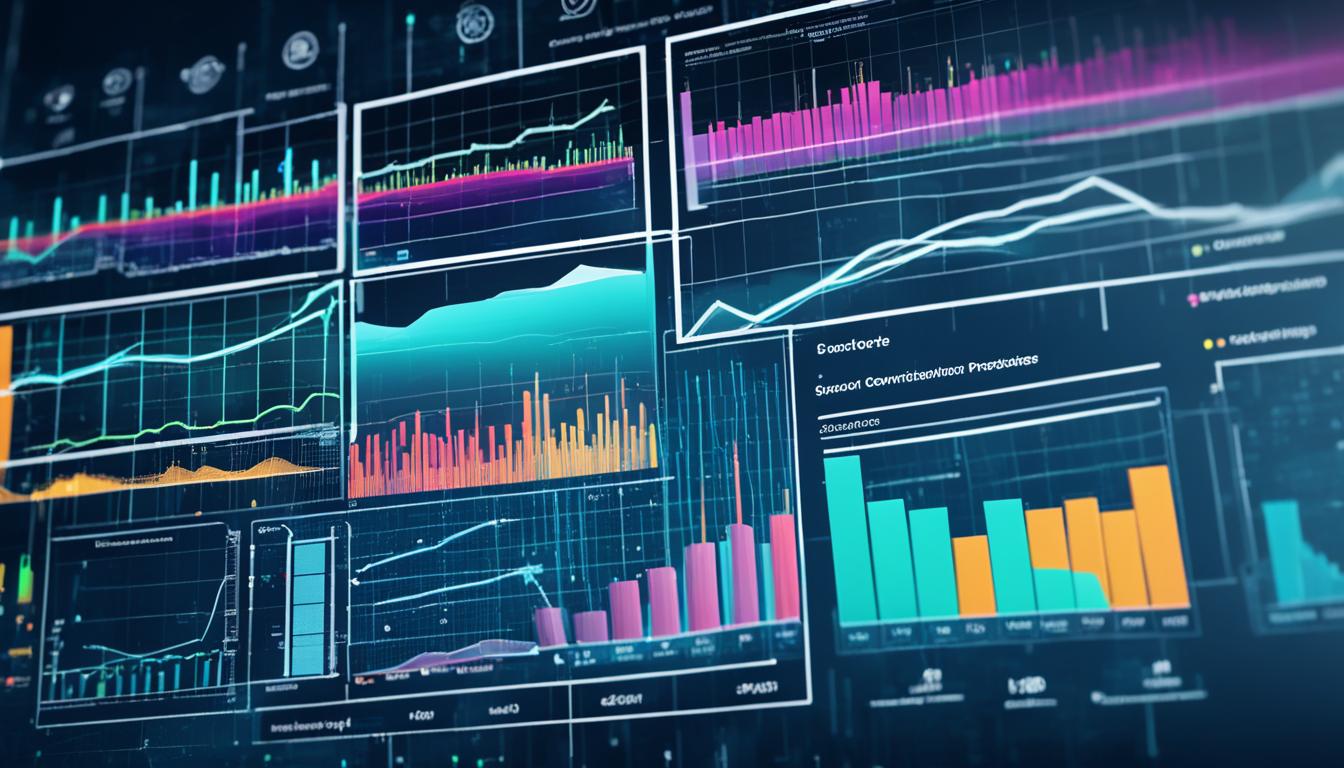In recent years, the public sector has embraced the power of data analytics to enhance government services and improve the lives of citizens. By harnessing the insights hidden within vast amounts of data, public sector agencies have been able to make informed decisions, optimize resource allocation, and deliver more efficient and effective services to the public. Data analytics has become a vital tool for governments, enabling them to identify patterns, trends, and opportunities that lead to better outcomes and greater citizen satisfaction.
Key Takeaways:
- Data analytics plays a crucial role in improving the efficiency and effectiveness of public sector services.
- By analyzing data, governments can identify patterns and trends to enhance service delivery.
- Data-driven decision-making allows policymakers to develop targeted solutions to address pressing issues.
- Investing in data literacy and infrastructure is essential to overcoming challenges in the public sector.
- Data analytics has diverse applications in healthcare, agriculture, transportation, education, and poverty eradication.
The Benefits of Data Analytics in the Public Sector
Data analytics in the public sector brings a multitude of advantages, fundamentally transforming the way government services are delivered. By harnessing the power of data, public sector agencies can make informed, data-driven decisions that have a lasting impact on policy development, resource allocation, and overall service quality. Government data analysis plays a crucial role in enhancing government services and improving the lives of citizens.
One of the primary benefits of data analytics in the public sector is the ability to make data-driven decisions. By analyzing vast amounts of data, policymakers gain valuable insights into pressing issues, enabling them to develop targeted solutions. Data-driven decision-making ensures a more efficient and effective use of resources, resulting in better outcomes for citizens and communities.
Moreover, data analytics allows public sector agencies to optimize resource allocation, enhancing productivity and service delivery. By understanding patterns and trends in data, agencies can identify areas that require additional resources or attention, thereby maximizing the impact of government initiatives. This optimization leads to more efficient and effective government services, ultimately improving the overall experience for citizens.
“Data analytics plays a crucial role in improving government services by allowing agencies to optimize resource allocation, enhance productivity, and deliver superior services to citizens.”
Data analytics also plays a vital role in fraud detection and waste reduction within government programs. By analyzing data, agencies can identify anomalies and patterns indicative of fraudulent activities or unnecessary waste and abuse. This proactive approach helps to safeguard public resources and ensures that taxpayer money is utilized optimally for the benefit of society.
Furthermore, data analytics contributes to reducing crime rates and enhancing security within communities. Public sector agencies can analyze data to identify crime hotspots, target intervention efforts, and allocate resources strategically. By taking a data-driven approach to crime prevention and security, governments can create safer environments for their citizens.
The potential of data analytics in the public sector extends far beyond the above-mentioned benefits. From healthcare to transportation, education to poverty eradication, data analytics has proven to be a game-changer in these domains. It empowers policymakers and professionals to make smarter decisions, leading to improved outcomes and services.
Enhancing Government Services Through Data Analytics
Data analytics enhances government services by enabling agencies to:
- Optimize resource allocation
- Improve productivity
- Target intervention efforts
- Enhance public safety
- Create data-driven policies
These examples illustrate the transformative potential of data analytics in the public sector. By leveraging the power of data-driven solutions, governments can enhance service delivery, foster innovation, and create a more inclusive and responsive public sector.

Overcoming Challenges in Data Analytics for the Public Sector
While data analytics offers numerous benefits, the public sector faces specific challenges that need to be addressed to fully leverage its potential. These challenges include biased data collection methods, a lack of technical expertise and resources, and the need for data literacy among government employees.
Biased data collection methods can hinder the accuracy and fairness of data analytics in the public sector. It is essential to implement robust data management practices that prioritize unbiased data collection, ensuring that the insights derived from the data are reliable and representative of the entire population.
The public sector also faces a shortage of technical expertise and resources necessary for effective data analytics. Government agencies need skilled professionals who can analyze and interpret data to derive actionable insights. Investing in training programs and partnerships with data experts can bridge this expertise gap and enable government employees to make data-driven decisions.
Data literacy among government employees is another crucial challenge that must be addressed. To fully optimize government data and its impact, employees need to possess the necessary skills to understand and work with data effectively. It is essential to prioritize data literacy programs and incorporate them into the training and development initiatives for government employees.
Additionally, robust data infrastructure is crucial for effective data analytics in the public sector. Governments should invest in developing open data portals and data-sharing platforms to facilitate easy access to valuable information. Improved data infrastructure promotes collaboration between departments, enhances transparency, and encourages innovation.
To overcome these challenges, the public sector must proactively invest in public sector data management, optimize government data, prioritize data literacy programs, and develop robust data infrastructure. By addressing these challenges, the public sector can unlock the full potential of data analytics, ensuring effective, equitable, and inclusive data-driven solutions.
Implementing these solutions will help the public sector harness the power of data analytics and drive positive change in government services.

| Challenges | Solutions |
|---|---|
| Biased data collection methods | Implement robust data management practices that prioritize unbiased data collection methods |
| Lack of technical expertise and resources | Invest in training programs and partnerships with data experts to bridge the expertise gap |
| Need for data literacy among government employees | Prioritize data literacy programs and incorporate them into training and development initiatives |
| Lack of robust data infrastructure | Develop open data portals and data-sharing platforms to improve data accessibility and collaboration |
Applications of Data Analytics in the Public Sector
Data analytics is revolutionizing the public sector by providing valuable insights and driving informed decision-making. Let’s explore some of the key applications of data analytics in various domains:
Data Analytics in Healthcare
Healthcare organizations are leveraging data analytics to improve patient outcomes, optimize resource allocation, and enhance public health programs. By analyzing patient data, healthcare providers can identify patterns and trends, leading to more effective treatment plans. Data analytics also helps in ensuring fair distribution of government subsidies, making healthcare more accessible and affordable for all.
Data Analytics in Agriculture
Data analytics plays a vital role in managing and supporting farmers by optimizing crop yields, determining the best planting and harvesting times, and monitoring the health of crops. By analyzing weather data, soil conditions, and market trends, governments can provide valuable insights to farmers, enabling them to make informed decisions and improve agricultural productivity.
Data Analytics in Transportation
Data analytics is transforming transportation systems by helping governments ensure safer roads, reduce traffic congestion, and optimize public transportation services. By analyzing traffic patterns, accident data, and public transit usage, governments can make data-driven decisions to improve transportation infrastructure and enhance the overall commuting experience.
Data Analytics in Education
Data analytics is revolutionizing education by providing valuable insights into student performance, identifying areas for improvement, and personalizing learning experiences. By analyzing student data, governments can understand educational needs, track academic progress, and implement targeted interventions to enhance educational outcomes. Data analytics also helps in designing evidence-based policies to improve the quality of education.
Data Analytics in Poverty Eradication
Data analytics plays a crucial role in poverty eradication efforts. By analyzing socioeconomic data, governments can uncover innovative ideas, identify areas with urgent needs, and develop targeted interventions to uplift marginalized communities. Data analytics enables governments to make data-driven decisions, allocate resources effectively, and ensure that poverty eradication programs have a meaningful impact on the lives of the underprivileged.

Conclusion
Data analytics is revolutionizing the public sector, offering immense potential in improving government services, fostering informed policy-making, and driving data-driven solutions. By analyzing vast amounts of data, governments can derive valuable insights that enable evidence-based decision-making processes. This data-driven approach enhances transparency and accountability, empowering policymakers to optimize resource allocation and deliver more efficient and effective services to citizens.
Despite the transformative power of data analytics, the public sector faces challenges that must be addressed to maximize its benefits. Bias and inadequate resources pose significant obstacles that can hinder the equitable and effective implementation of data-driven solutions. It is crucial for governments to invest in data literacy programs and digital infrastructure to cultivate a workforce capable of utilizing data effectively and to build a robust data ecosystem that enables seamless data sharing and collaboration across agencies.
With continued commitment to data literacy and infrastructure development, the public sector can unlock the full potential of data analytics. By embracing data-driven solutions, governments can improve service delivery, enhance policy formulation, and ultimately, create positive societal impact. Through the power of data, the public sector will be better equipped to address complex challenges, drive innovation, and deliver tangible outcomes that meet the evolving needs and expectations of citizens.
FAQ
How does data analytics improve government services?
Data analytics helps government agencies identify patterns and trends, optimize resource allocation, enhance productivity, and deliver superior services to citizens.
What role does data analytics play in evidence-based decision-making?
Data analytics allows policymakers to analyze data and make informed decisions by identifying pressing issues and developing targeted solutions.
What challenges are associated with data analytics in the public sector?
Challenges include biased data collection methods, a lack of technical expertise and resources, and the need for data literacy among government employees.
How can the public sector overcome these challenges?
It is crucial for the public sector to invest in data literacy programs and infrastructure, such as data training for employees and the development of open data portals.
What are some applications of data analytics in the public sector?
Data analytics has applications in healthcare for resource allocation and public health programs, agriculture for supporting farmers, transportation for safer roads, education for understanding educational needs, and poverty eradication for innovative ideas and identifying areas with urgent needs.
How does data analytics revolutionize the public sector?
Data analytics improves government services, facilitates informed policy-making, enhances transparency and accountability, and optimizes resource allocation.








